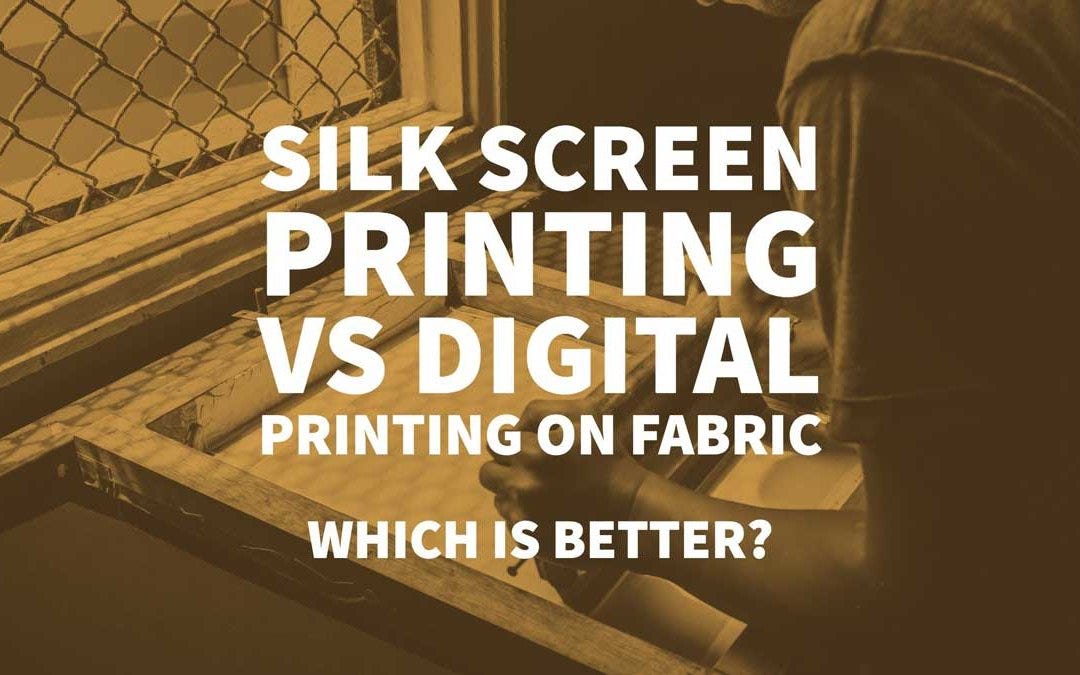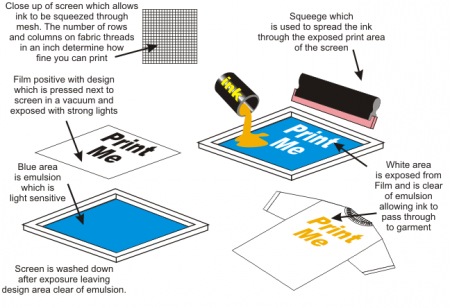Some Known Incorrect Statements About Tx Tees
Table of ContentsThe Facts About Tx Tees UncoveredExcitement About Tx TeesFacts About Tx Tees RevealedTop Guidelines Of Tx TeesIndicators on Tx Tees You Need To KnowTx Tees Can Be Fun For EveryoneAbout Tx Tees
That brings your total amount to about $1,900 gross and shipping. Include up various other expenses, like the number of utilities it requires to run the store and the expense of ink and emulsion per style. custom monograming. Take the print below for instance. This is a one-color image, so the cost of ink per t-shirt is around 20 cents.The solution needs to just be a couple of cents given that you 'd just require to coat one display for this task. Usually, printers attempt to make up to 45% earnings on a print job.

With DTF, you can publish a handful of tee shirts, or just one. Use the very same calculator as the area above to calculate just how much earnings you 'd make using DTF transfers. Contrast the expenses and profits to whichever approach talks best to your setup and procedure. Both screen printing and DTF have their niches in the globe.
The Tx Tees Diaries
The very best method to recognize? Ask around and see what print shops like your own are doing. custom screen printing. Try both out and see which you like much better
When you're selecting what kind of printing approach to use for printing your artwork styles on your garments, it is necessary that you know the differences between these two methods so you can maximize results while reducing expenses. Screen printing is the most typically utilized method for publishing styles on fabrics.
DTG printing is likewise called area or straight to garment printing due to the fact that it publishes just what is required instead of making a screen as screen printers do. https://ameblo.jp/txtees02/entry-12846162662.html. Display printing functions by screen filler squeegee display printing ink display mesh screen, after that transferring the photo to garment utilizing warm and/or pressure
The DTG printer makes use of special dye-sublimation inks that are used into a pre-designed photo by an electronic printing system. The inks become component of the fabric, permitting for lively colors and outstanding detail. It's additionally referred to as area or direct to garment printing since it prints only what is required as opposed to making a display as display printers do.
Things about Tx Tees
First, it's much quicker - you can publish a fullcolor image in minutes, rather than hours for display printing. Second, there's no established time or expenses entailed - you can publish any kind of design you like, without having to create a screen first. Third, there's no waste - since screen printers display print one style at once, they need to evaluate each shade independently.
The paper is really pricey and can just be utilized once. Once it's printed on, it has to be discarded. - The initial purchase price is less than the upfront financial investment of DTG printers- You can publish multi-color layouts one display at once as opposed to needing to publish each color separately like DTG printing.

Some Known Details About Tx Tees
Rather of using screen mesh as screen printers do, color sublimation printers make use of laser technology to transfer your photos onto garments or paper. A warmth process transfers the dye from its solid-state straight right into the gas stage which in turn merges it onto material substratums when they are swiftly heated to high temperatures under high pressure.
Sublimation printing is green. It uses less water than screenprinting, and since it doesn't include the usage of unsafe solvents, it's safe for all types of clothing. The color sublimation inks are likewise odor free when treated, unlike screen printers that utilize unsafe chemicals during the display printing process that leave behind an undesirable smell.
They also conserve money on costly tools like direct exposure devices considering that dye sublimation printers do not need a UV direct exposure device or a flash treatment stove that is typically used in screen printing (t-shirt printing). What is direct to garment printing (DTG Printing)? DTG printing is a digital screenprinting procedure that prints directly onto fabric using specialized inkjet printers
Things about Tx Tees
DTG printing provides many advantages over typical screenprinting, including the ability to publish photographic top quality pictures, greater shade vibrancy, and the capability to publish designs on darker textiles. DTG printers work by warming the fabric ink until it turns right into a gas. The gas then permeates the material, bonding with the fibers to create a permanent print.

Display printers just prepare their screen then start publishing till they lack product or ink.- There is a vast array of skilled screen printers throughout the globe, try this web-site which can be handy for newbies. - It's a slower procedure - display printers usually need to await the ink to completely dry prior to they can print the next shade- Display printers need manual labor, so there's a higher understanding contour and it takes longer to create a premium style- Screen printing isn't as exact as DTG printing, so you may get some "blood loss" of colors from one part of the photo onto one more if not done properly.
The Facts About Tx Tees Revealed
Nevertheless, as opposed to utilizing display mesh as screen printers do, color sublimation printers use laser innovation to move your pictures onto garments or paper. A heat procedure moves the dye from its solid-state directly right into the gas phase which consequently integrates it onto fabric substrates when they are swiftly heated to high temperatures under high stress.
Sublimation printing is environmentally friendly. It utilizes much less water than screenprinting, and because it doesn't entail using unsafe solvents, it's secure for all kinds of garments. The color sublimation inks are likewise unsmelling when treated, unlike display printers that make use of damaging chemicals throughout the display printing procedure that leave an unpleasant smell.
They additionally save money on pricey tools like direct exposure units because color sublimation printers don't require a UV exposure system or a flash remedy stove that is usually utilized in screen printing. What is direct to garment printing (DTG Printing)? DTG printing is a digital screenprinting process that prints directly onto material utilizing specialized inkjet printers.
8 Simple Techniques For Tx Tees
DTG printing offers several advantages over standard screenprinting, including the ability to print photo quality pictures, greater color vibrancy, and the capacity to publish styles on darker fabrics. DTG printers work by heating the fabric ink till it becomes a gas. The gas after that penetrates the textile, bonding with the fibers to produce a permanent print.